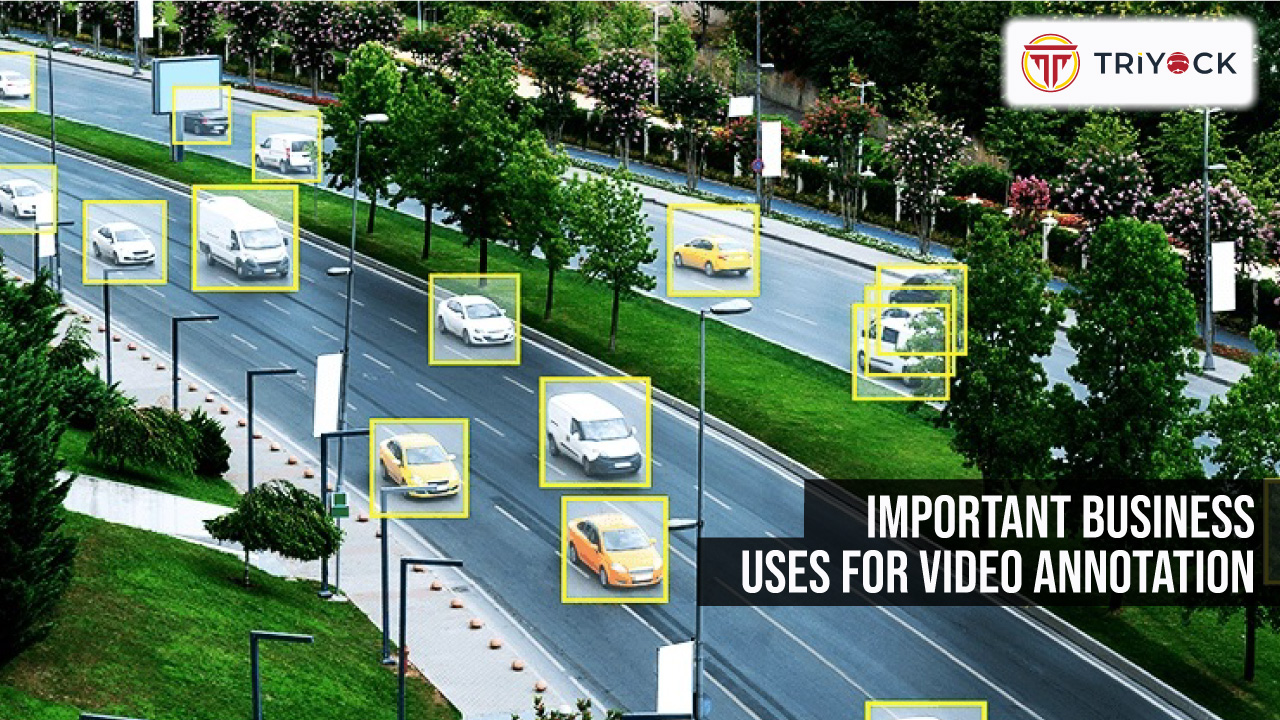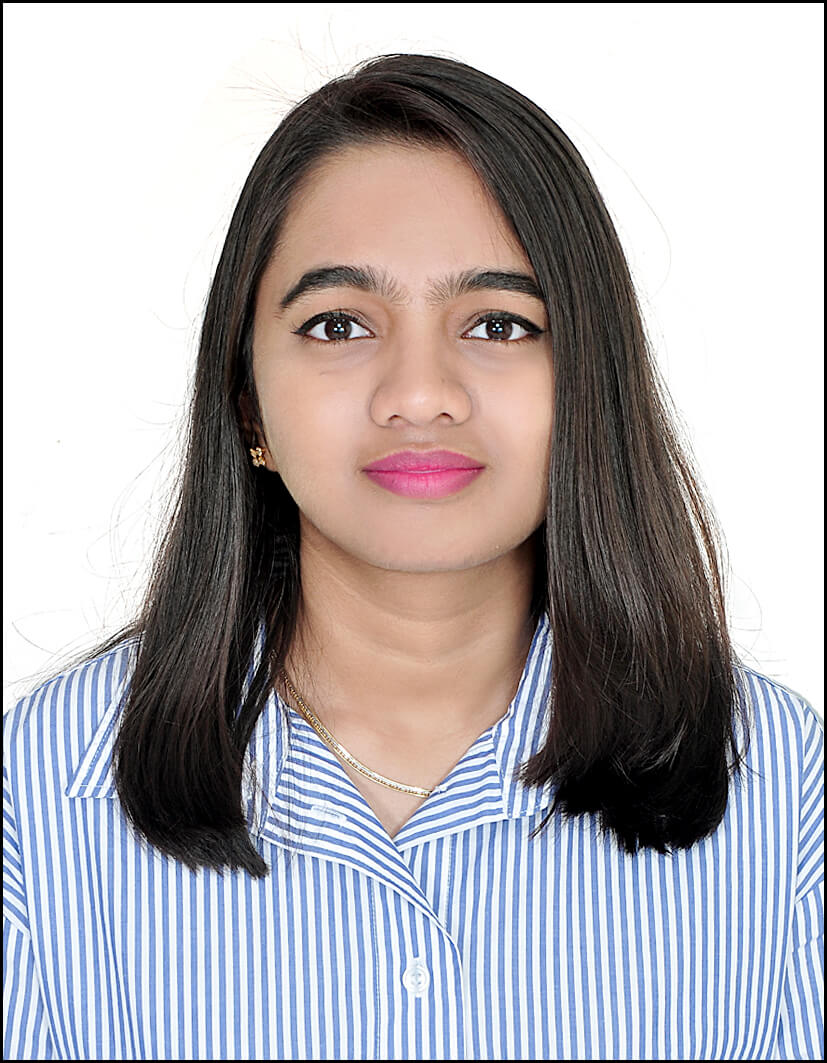
Important Business Uses for Video Annotation
Aisha Aslam
The global Data Annotation market, which is predicted to grow from $1,186.9 million in 2021 to $13,287.9 million in 2030, includes a sizeable portion of Video Annotation. Similar to image annotation, Video Annotation is a crucial method used by scientists to annotate video clips with descriptive metadata and produce a dataset for the training of computer vision models. Many companies and sectors currently rely on Video Annotation to train their AI/ML models for a variety of objectives. This essay will look at the most important business applications for Video Annotation out of all those.
The significance of Video Annotation and its methods
Video Annotation allows for the frame-by-frame identification, notation, and categorization of every object in a video. The main objective of Video Annotation is to make it easier for AI-powered systems to recognise objects in videos.
Computer vision-enabled systems can employ properly annotated films to build a high-quality reference database that can precisely identify items like humans, cars, and animals. Given how many everyday tasks now rely on computer vision, it is impossible to overstate the value of Video Annotation.
With better video tagging accuracy, the AI model will perform better. Automated technologies enable firms to scale up quickly and deploy with confidence thanks to accurate Video Annotation.
There are two methods for approaching Video Annotation, and they produce significantly different results. Here are some of them for your review:
Single-frame Annotation
This kind of Video Annotation divides or separates the video into various frames or images. This approach can be costly and time-consuming, and it is only suitable for videos with less dynamic object movement.
Multi-frame Annotation
The annotator names the items as video streams using Data Annotation tools also referred to as continuous frame-by-frame Data Annotation. Computers use continuous frame techniques like optical flow to evaluate the pixels in the previous and next frames and forecast the motion of the pixels in the current frame. With this much information, computers can accurately recognise an object that appears at the beginning of a movie, disappears for a few frames, and then reappears later.
Applications of Video Annotation in Important Industries
Many companies are making extensive use of Video Annotation to improve the predictive accuracy of their AI models. Following are some examples of video annotation applications:
1. Detecting Sports Movement
Even though it may seem unlikely, professional sports are finding a need for keypoint annotation, a type of Video Annotation. Utilizing this technical framework, some businesses keep track of player movement and record performance changes that might otherwise go unnoticed by the human eye through video footage. Furthermore, a slight change in how your muscles function could indicate an approaching injury. Early detection aids in the prevention and can lengthen a player's career.
Even though it may seem unlikely, professional sports are finding a need for keypoint annotation, a type of Video Annotation. Utilizing this technical framework, some businesses keep track of player movement and record performance changes that might otherwise go unnoticed by the human eye through video footage. Furthermore, a slight change in how your muscles function could indicate an approaching injury. Early detection aids in the prevention and can lengthen a player's career.
2. Diagnosing Diseases in Healthcare
Beyond sports, movement analysis and keypoint annotation are used. Medical experts can discover a lot about a patient's health when employing keypoint annotation models for movement analysis, particularly by examining the patient's gait. Scientists are utilising their knowledge of gait measurements and analysis, and they are using machine learning to do so, to learn more about various diseases and injuries.
By classifying digital videos using video tagging, medical professionals may frame-by-frame label the key joint regions in patients with disorders like stroke, Parkinson's, and cerebral palsy. By applying the concept of transfer learning to their data and putting pre-trained models into practice using deep learning, scientists can evaluate a range of measures, including walking speed, cadence, swing and stance time, and double support time. They then used their findings to compare gait data in pre-trained models with that of healthy individuals. Because healthy individuals usually have similar gaits, it is easy to get a rough picture of what these measures should look like.
3. Taking Care of the Livestock and Crops
Computer imaginative and prescient fashions are assisting farmers in some ways, from farm animals and aquaculture to crop and bring monitoring. On the opposite hand, growing such apps needs operating in unexpected, chaotic, and extraordinarily dynamic environments wherein terrain and centred gadgets are constantly changing.
Using high-definition video recordings from aerial drones or sensor systems, farmers can assemble subject maps masking massive areas of space. Technologies with the usage of synthetic intelligence (AI) can perceive regions that want instantaneous attention. By the usage of sources extra effectively, farmers may also keep cash even as additionally cashing in on multiplied crop yields.
To monitor cattle production systems and, if feasible, make them more effective, the annotation has evolved. Animal movement patterns are analysed using movies by animal behaviour classifiers to determine how much stress an animal may be experiencing. Farmers may change diets well in advance thanks to weight forecasting algorithms, which can predict an animal's weight 150 days in the future.
Stress projections serve as a reference for additional predictions about sickness propensity, weight loss, and other related effects.
Machines may recognise and alert farmers when it is time to harvest by listening to labelled recordings of plants at different stages of development, in addition to keeping an eye on the well-being of livestock.
4. Recognizing Consumer Behavior
Video Annotation is needed to create a range of retail applications, including autonomous checkout, product prediction for a specific user, identifying which products are running low on supply in the shop, etc. With the use of these systems, business owners may categorise and monitor customer behaviour inside their stores, such as picking items off the shelves and placing them in baskets, putting them back on the shelves, trying to steal things, calculating the number of items on the shelves, etc.
Along with supporting customers with straightforward checkout procedures and product tracing, retailers may utilise AI-enabled cameras to study client moods and preferences through films. But for AI-based retail systems to apply machine learning algorithms effectively, adequate training data must be used.
5. Drones and aerial photography.
Unexpectedly, a computer vision-based AI drone has significantly altered the electronics industry. To visualise the objects while they are in flight and prevent collisions, it still needs a tonne of training data.
The detection of moving objects while the drone is in the air is made easier with the help of Video Annotation for drone training. Only until drones have been correctly trained using the training data generated by picture annotation services can they discriminate between people running, moving animals, and fast-moving autos.
Movie annotation is widely used to highlight key elements in a video and makes it feasible to recognise even moving objects thanks to frame-by-frame annotations. In the long run, it will enable safe flight while finally avoiding devastating air crashes. To understand the data, detect objects, recognise people or other actions, and train the AI model for the drone, a machine-learning system can accurately label films.
Video Annotation for aerial photos is available for all kinds of ways to locate or categorise the many elements viewed from the overhead perspective.
Experts can use aerial photography to quickly and accurately examine thousands of hours of satellite data by themselves. AI systems can identify which structures have recently been added by comparing video footage from different days.
Conclusion
Video Annotation is an important and excellent tool with many benefits for businesses and society. While many businesses have already implemented Video Annotation, the list of applications for this technology is constantly expanding, and new applications for computer vision are regularly identified.
The ideal Video Annotation tool platform would unite top-tier data professionals with automated annotation technology to supply the data required for your production processes. There is nothing wrong with seeking professional assistance. A group of specialists will work on your particular business needs by providing the finest solution for you.

 Let’s get started
Let’s get started



 info@triyock.com
info@triyock.com